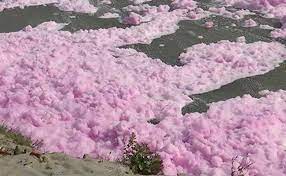11 Nov 2021 Foam in Yamuna

- Recently, a layer of foam was seen floating on some parts of river Yamuna which has now become a frequent occurrence in Delhi.
- Earlier, Delhi’s water supply was being disrupted repeatedly due to high levels of ammonia in the Yamuna.
Steps taken to prevent foam formation:
- The Delhi Pollution Control Committee (DPCC) has banned the sale, storage and transportation of soaps and detergents not manufactured as per the quality standards set by the Bureau of Indian Standards (BIS).
- The fifth report of the Yamuna Monitoring Committee appointed by the National Green Tribunal (NGT) states that the BIS standards for detergents have been improved, but it is not clear whether these standards will actually be implemented Or not.
- The role of regulatory bodies such as the Central Pollution Control Board (CPCB), DPCC and Pollution Control Boards (PCBs) is generally limited to enforcing discharge/flow standards.
Yamuna:
Origin: It is a major tributary of the Ganges River which originates from the Yamunotri Glacier near Bandarpoonch Peaks in the Mussoorie Range of the Lower Himalayas at an altitude of 6387 meters above sea level in Uttarkashi district of Uttarakhand.
Basin: It meets the Ganges at Sangam (where KumbhMela is held) in Prayagraj, Uttar Pradesh after flowing through Uttarakhand, Himachal Pradesh, Haryana and Delhi.
Length: 1376 km.
Important Dams: Lakhwar-Vyasi Dam (Uttarakhand), Tajewala Barrage Dam (Haryana) etc.
Important tributaries: Chambal, Sindh, Betwa and Ken.
Download Plutus ias daily current affairs 11 November 2021


No Comments